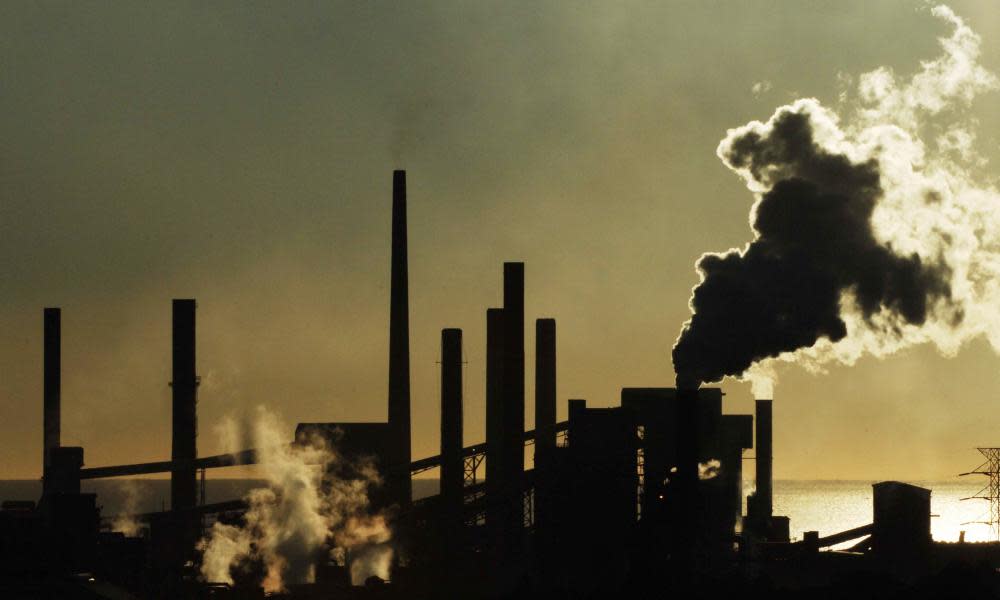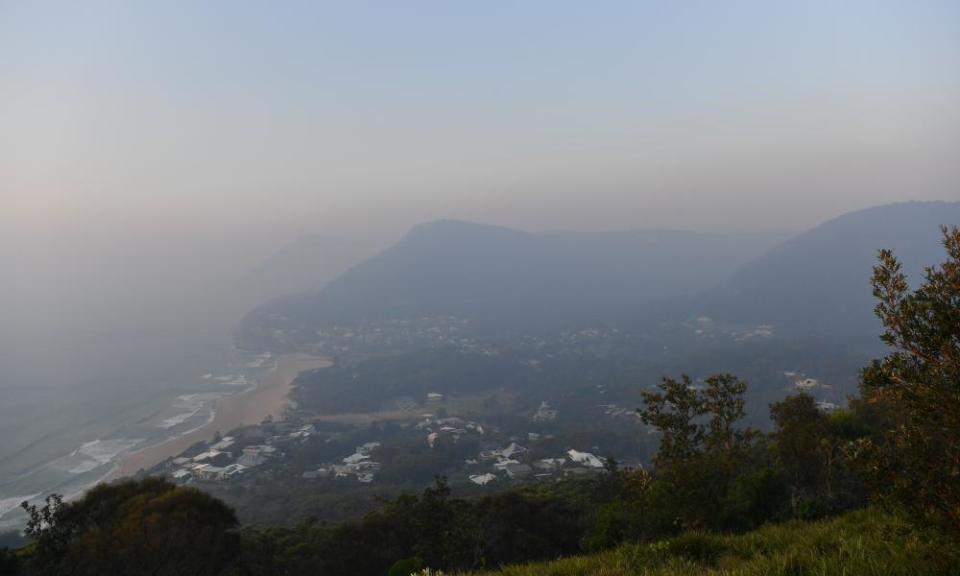NSW government abandons plan for air pollution policy after five years of planning

The Berejiklian government has abandoned a long-held commitment to adopt a statewide policy on air pollution after years of planning that included a state summit on the issue.
The decision to drop a standalone clean air strategy has sparked anger from communities living near major sources of pollution, such as coal-fired power stations, who say without an overarching strategy they can have no confidence their air quality will improve.
Public consultation for a statewide framework to reduce toxic air and the health problems it causes commenced in 2016, culminating in a clean air summit in Sydney in 2017.
The event was labelled a “vital step” toward a 10-year plan – known as the Clean Air Strategy – and the government promised the strategy would be released later that year.
But the government says instead of developing a standalone framework it will now absorb air quality management into other environmental and industry policies.
The decision has prompted anger from organisations and communities most affected by air pollution, such as the Hunter Valley, which have spent four years contributing to development of the strategy. They said the government had not advised them it no longer planned to implement a standalone policy.
On learning the news, James Whelan, an air pollution researcher based in the Hunter Valley, said “my blood boiled”.
Whelan helped convene public forums as part of the consultation process and was shocked a standalone strategy had been abandoned.
“It’s a poor decision. It’s an alarming decision for people who live in polluted airsheds,” he said.
“We had many hundreds of air pollution alerts [in the Hunter] last year.”

The NSW Environmental Protection Authority developed a draft clean air policy and presented it to the environment minister, Matt Kean, in May 2019.
The draft has never been released and the EPA would not provide details on what it had proposed.
A government spokesman said “while the plan remains under consideration” it was being considered as a component of other policies such as the state’s net zero emissions plan, the NSW electricity strategy, and a state plan for the transition to electric and hybrid vehicles.
Related: The toxic air we breathe: the health crisis from Australia's bushfires
“Rather than releasing a standalone plan for clean air, the NSW government is integrating air quality as a key component of other strategic priorities,” he said.
Community and environmental advocates have for years called for an overarching policy on toxic air pollutants that would manage a range of sources of pollution known to be harmful to human health.
Air pollution disproportionately affects low income communities and worsens conditions such as asthma, emphysema, chronic bronchitis and other respiratory diseases. An estimated 3,000 deaths per year in Australia are due to urban air pollution.
Last year, a global report by Greenpeace singled Australia out for air pollution standards that allowed power stations to emit sulphur dioxide at higher rates than in China and the EU.
The Vales Point and Eraring coal-fired power stations in the Lake Macquarie region and the Liddell and Bayswater power stations near Muswellbrook in the Hunter Valley all featured in the report on a list of the top 100 individual sources of toxic emissions.
The proposed clean air strategy for NSW was meant to cover the major sources of air pollution – coal-fired power stations, coal mines, and on- and off-road transport emissions – as well as heavy industry, the chemical industry, bushfires and woodfire heaters.
Whelan said breaking air pollution into ad hoc actions across a range of policy areas would provide no safety or assurance for people in NSW living near major pollution sources.
“To refer to ad hoc elements of climate policy as some kind of surrogate for an integrated air pollution control strategy, I’d love to see the minister front up to communities of the Hunter Valley with that as his explanation,” he said.
“Whole of government policies are what governments do when a problem is deemed important.”
Related: NSW and Queensland coal industry uses as much water as all Sydney households, report finds
NSW Labor’s environment spokeswoman, Kate Washington, said the government was breaking a commitment to deliver some rigour around air quality management in the state.
“That was what people went to a conference for. That was what people were consulted for,” she said.
“They were always told there would be a strategy designed from the conference and their input.
“Now this is just like the mega departments they have created so that things can get hidden and nobody does anything.”
Bob Vickers is a GP in Singleton who has raised concerns about the short- and long-term health effects of exposure to pollutants for people living in coal communities. He said air pollution could affect every system in the body.
“To me, the issue is consent,” he said.
“If someone chooses to smoke or have a modifiable risk as part of their health, that is one thing. Everyone has a right to clean air though. It’s somewhat about justice.”
News of the decision comes as a NSW parliamentary inquiry into the health effects of exposure to poor air quality as a result of the recent bushfire disaster and drought gets under way.
The royal commission into the bushfires heard last month that the summer smoke had caused an estimated 445 deaths and put 4,000 people in hospital.
Environmental Justice Australia had input into the public consultation process for the proposed NSW strategy, bringing experts and community groups together.
“It is extremely disappointing to discover that the NSW government has been sitting on an air pollution strategy for more than 12 months and has now decided it is dead in the water without any consultation with community groups who fed into this strategy over four years,” Max Smith, EJA’s clean air campaigner, said.
Smith called for the government to explain why it had changed course, ignoring communities and the advice of the EPA, and for the draft strategy to be made public.
He said the alternative initiatives were inadequate and in some instances did not even mention measures for controlling toxic air.
“The policy rationale for an air pollution strategy is that you have a holistic plan to tackle the biggest sources of pollution and protect the health of the people of New South Wales,” he said.
“This policy backflip doesn’t do that.”
The government’s spokesman said the government was delivering a “robust monitoring and regulatory system” that included penalties for non-compliance by polluters.
He said measures to expand the monitoring network, improve public information on air quality and “strengthen the evidence base for air quality improvements” were announced at the 2017 summit.
“These measures have since been delivered and were further enhanced in response to the 2019-2020 bushfire season,” he said.


